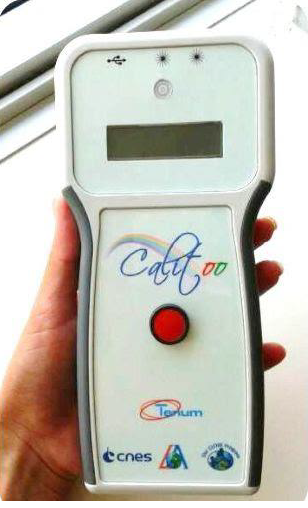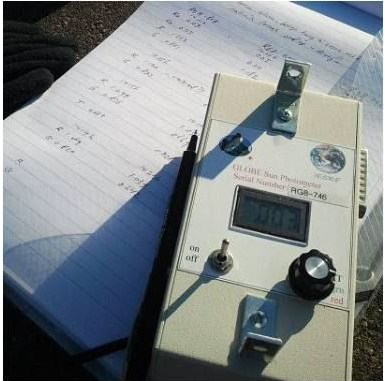Connections to GLOBE - Mission Earth
Air Quality Data & GLOBE Protocol Integration
Remember, only make observations when it is safe to do so. Follow local regulations.
NEVER look directly at the Sun.
GLOBE Clouds Protocol
The GLOBE Clouds Protocol can give clues about the presence of aerosols when sky color and visibility are reported. The lighter the shade of blue in the sky, the more aerosols may be present. In addition, more haze can indicate the presence of more aerosols. Submitting photos with the observation is also very helpful. The video below describes the importance of sky color and visibility in the observations.
GLOBE Aerosols Protocol


The GLOBE Aerosols protocol is used to measure aerosol optical thickness using a sun photometer. The higher the number, the more aerosols were measured in the column of the atmosphere. The altitude of the aerosols can not be determined by this measurement.
When making these observations, it is important that there are no clouds blocking the Sun, as clouds can interfere with the measurements made by the photometer. NEVER look directly at the Sun.
GLOBE Air Quality Protocol Bundle
The purpose of the Air Quality Bundle is to provide community scientists with a set of protocols to use to monitor local air quality, which can keep community members and stakeholders informed and help guide policy decisions. It also explains the basic science of air quality and the different types of air pollution. Several protocols are included in this bundle. The Air Quality Bundle explains how each of these are related to air quality. Aerosols and Clouds are two of the protocols that are directly related to aerosol measurements.
- Aerosols
- Air Temperature
- Barometric Pressure
- Clouds
- Precipitation
- Relative Humidity
- Land Cover Classification
Recommendations
- Become a GLOBE Certified Teacher by doing eTraining or attending a workshop.
- Create a teacher account on the GLOBE website.





